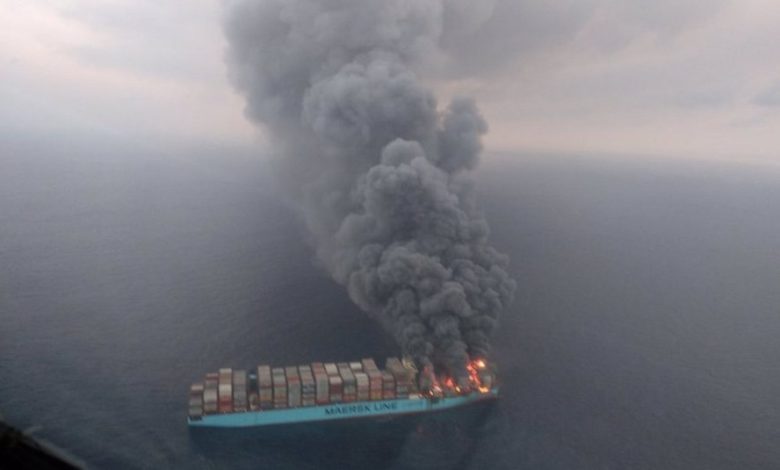UK-patented sensor backed to help fight shipping’s growing battery fire crisis

The inventors of the Thermarestor, a UK-patented sensor, are pitching the technology as a way for shipping to counter the growing threat posed by the carriage of lithium-ion batteries.
Many boxships and car carriers have been hit by extreme fires from growing transportation of in-demand lithium-ion batteries with class, insurers and a host of international organisations all working on solutions. In damaged lithium-ion batteries, individual cells are prone to overheating, expelling flammable and toxic gases, and affecting surrounding cells as part of an explosive chain reaction called thermal runaway. Lithium-ion batteries that catch fire can reach temperatures of more than 2,700 degrees Celsius.
Thermarestor is a low-cost product that alerts third parties to excessive, but pre-ignition heat in electrical locations. The predictive solution for electrical and lithium-ion battery fires has mainly been used thus far in standard electrical distribution boards in residential, commercial and industrial locations, but its backers believe it could prove a useful alarm at sea too.
“As many thermal runaway events involving lithium-ion batteries are preceded by rising then excessive heat it is at this stage that the problem might also be addressed – but prior to ignition. So if an alert can be sent to a third party at this pre-ignition stage, then a period of time is created, and in which time span appropriate decisions might be made,” explained Matthew McKaig, director of communications at Thermarestor
The dangers of carrying lithium-ion batteries on ships was highlighted in an Allianz Global Corporate & Speciality report, which ranked fire and explosion as the number one cause of marine insurance losses by value from 2017 to 2021. The research, issued in November 2022, also revealed the growing threat of fires caused by lithium-ion batteries that are not stored, handled or transported correctly.
In November last year, insurers UK P&I Club and TT Club teamed up with scientific consultants, Brookes Bell, and issued a 21-page white paper highlighting the continuing safety threat created by the transportation of lithium-ion batteries.
The white paper has a call to action demanding shippers present test certificates issued by an independent laboratory when consigning lithium-ion batteries for transport. The report also urges clearer classification for lithium-ion powered electric vehicles (EVs), with specific requirements such as state of charge, battery chemistry, type of battery, capacity and/or details on safety systems in place.
The white paper also calls for car carrier operators to have better stowage locations and better monitoring of EVs during voyage, with a view to developing early detection, evacuation and/or firefighting procedures.
Mandatory markings of EVs is another suggestion to assist stowage and emergency response.
When shipping li-ion batteries by air, IATA regulations specify a maximum state of charge (SOC) of 30% of their rated capacity. No such SOC criteria are currently in place for transportation by sea, or other surface modes of transport, the authors of the report pointed out.
The paper also notes that current regulations do not take into consideration that a significant proportion of batteries are transported immediately after having been used or charged, as is the case for EVs having been driven onto a roro or car carrier.
